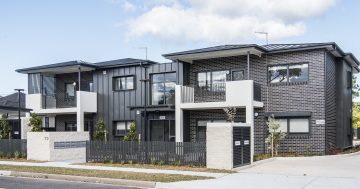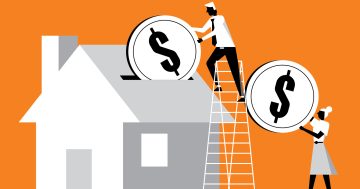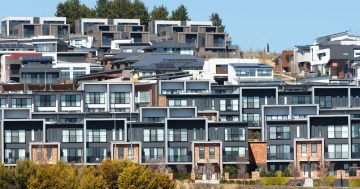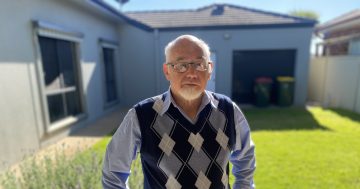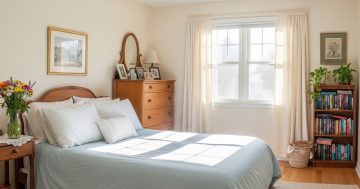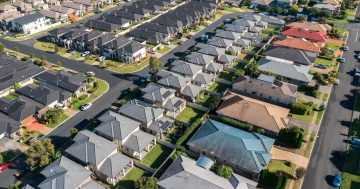Even with a historic fall in house prices, rents are tipped to rise by as much as 10 per cent. James Purtill* explains why renters can’t catch a break.
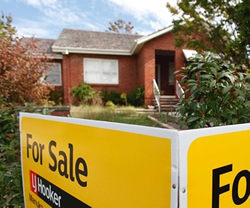 With news that house prices are falling sharply in several capital cities, millions of renters may be looking forward to paying the landlord a bit less.
With news that house prices are falling sharply in several capital cities, millions of renters may be looking forward to paying the landlord a bit less.
CoreLogic data released this week shows house prices in Australia are dropping at their fastest pace since the global financial crisis.
The median price in Sydney saw the sharpest value falls in almost 40 years, while values in Melbourne, Hobart, Brisbane and regional Australia also dropped last month.
So rents should fall too, right?
Wrong.
For most of the 2.4 million households renting from private landlords, rents will go up at a historically rapid clip over the next year.
Here’s why.
Prices go down, but rents keep going up
Rents have jumped about 2.8 per cent in the past quarter, and are expected to rise further still, said CoreLogic’s research director Tim Lawless.
“We’ve already seen rents up 9.8 per cent over 12 months to July,” he said.
“By this time next year I wouldn’t be surprised if there’s been a similar increase of around 10 per cent.”
Basically, there’s no short-term relationship between the change in house prices and the amount tenants pay their landlords.
Since August 2020, the fairly flat and predictable trajectory of rental payment increases has taken a sharp upwards turn.
In fact, the increase has been so sharp that Mr Lawless expects we’re approaching a “ceiling” on what renters are “able to pay”.
“Rental affordability is already challenging, and it’s going to become worse,” he said.
“I think a time will come when renters can’t fathom higher rents.”
Interest rates, returning students and COVID getaways for the wealthy
The reason rental payments will increase as house prices fall is due to a combination of factors, from rising interest rates, returning international students, and housing market changes wrought by COVID.
Higher interest rates means larger mortgage payments, which landlords are simply handballing to their tenants.
The return of international students with the opening of Australia’s borders will increase demand for rental accommodation.
The resumption of tourism will also have an impact, said Chris Martin, a researcher at UNSW’s City Futures Research Centre.
“There’s probably been properties that have moved out of the rental sector to Airbnb and the tourism sector,” he said.
The pandemic has also seen more people with higher incomes owning a holiday home that they do not rent out, he said.
“If that happens often enough that would affect rental supply and could make rents even more expensive for people,” he said.
This increase in demand and reduction in supply will be counteracted by more tenants moving back into sharehouses, said CoreLogic’s Tim Lawless.
“Rental households became smaller during the pandemic as tenants looked for space,” he said.
That is, couples and individuals in sharehouses moved into places of their own, which meant they were paying more for rent.
This was highlighted in a recent speech by the Reserve Bank’s Luci Ellis, who noted, “On the question of who you would rather be locked down with, at least some Australians have voted with their removalists’ van, by moving out of their share house and in with their partner.”
This trend will likely be reversed as rents increase and the sharehouses reform out of mutual financial benefit, said Mr Lawless.
“Renters may need to occupy the room they’ve used as a home office,” he said.
The rental market’s shifting ‘bulge’
But there’s another, longer term trend that’s also driving up rents.
Because the cost of buying a house is unaffordable for many, Australians are renting longer in their lives, and into what Dr Martin calls the “prime income years”.
“There’s been more households who would have otherwise in previous generations have been owning, but they’re renting,” he said.
“They are higher income houses and can spend that higher income on rental housing.”
In 1996, there was a big bulge in properties around the $200 a week mark.
By 2016, it had shifted to $500.
Renters who could have never have afforded $500 a week when they were studying 20 years ago now have careers and can stump up the money (even if they’d prefer to pay much less).
“The rental market has changed shape and the big driver has been the increasing presence of higher income tenant households priced out of home ownership,” Dr Martin said.
So, what’s the outlook?
For renters, the outlook isn’t great for at least the next 12 months, said Mr Lawless.
So long as interest rates go up and the borders stay open, rents will probably keep increasing, even if house prices fall.
For rents to eventually go down, housing prices would have to keep falling for a long period, while interest rates stayed low.
And that’s unlikely to happen on a national scale, said Mr Lawless.
“If we want to see an alleviation, we need to see government take a more active role in delivering rental accommodation,” he said.
That included more social and community housing initiatives for low and moderate income Australians, he said.
Dr Martin agreed.
“The way I’d like to see rents go down is if we actually had a rental sector with abundant rental housing for not for profits,” he said.
“We need a different sort of landlord.”
*James Purtill works at triple j Hack in Sydney
This article first appeared at abc.net.au.


